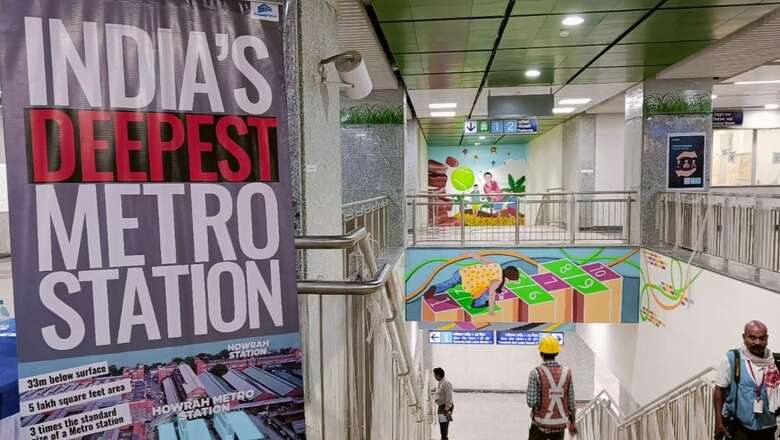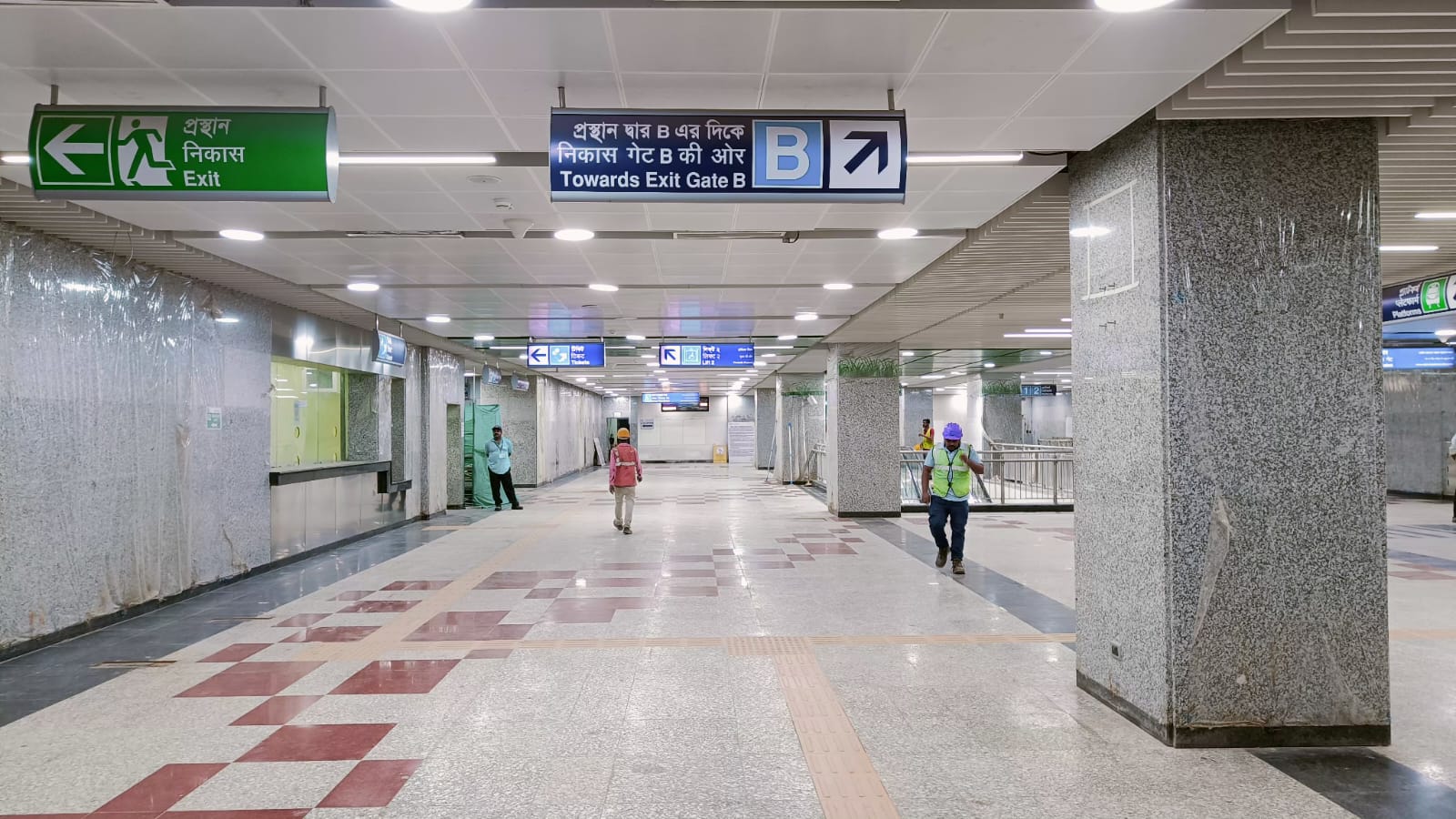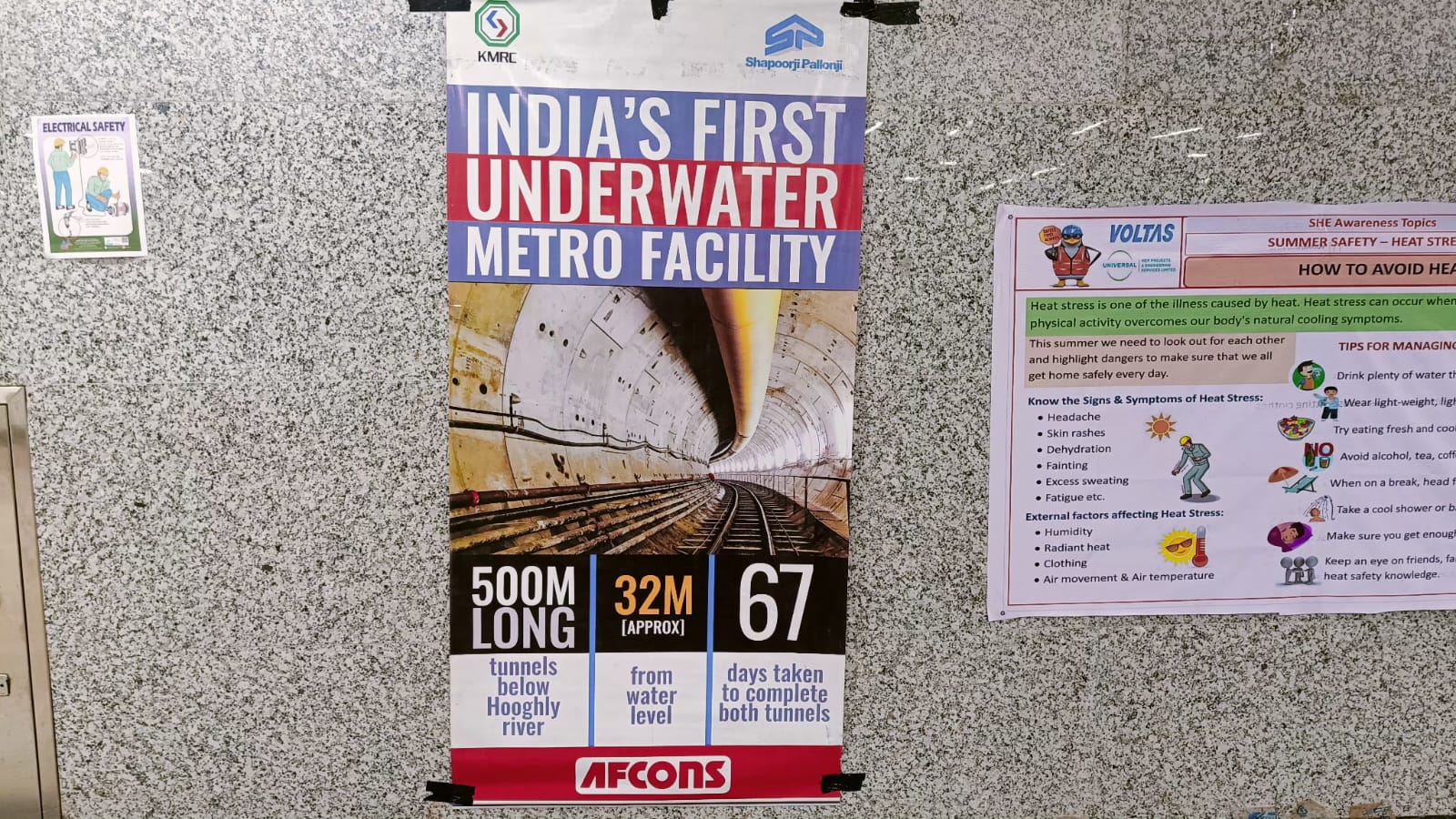
views
Very soon, Kolkata will be on the list of the few cities in the world that have an underwater Metro. Expected to be operational by the end of the year, this line could change the transport scenario between Howrah and Kolkata and may give an infrastructure push to other cities as well.
Last month, for the first time, a rake of the Kolkata Metro crossed the Hooghly river through a tunnel below the riverbed between Mahakaran and Howrah Maidan Metro stations. Now, the trial run of this stretch is underway and the testing will continue for the next six months at least. News18 boarded the trial run of this underwater Metro on Friday.
Light at the end of the tunnel
With the commissioning of this line, India will get its first transportation tunnel under any river. Interestingly, India’s first bullet train will also have an undersea stretch in Maharashtra but West Bengal will take away the tag of having India’s first underwater transport tunnel.

This stretch is a part of the 4.8-km underground section from Howrah Maidan to Esplanade. The regular services are expected to start by December.
Once operational, Howrah will be the deepest Metro station in the country, situated 33 metres below the surface.
According to Biswanath Mustafi, testing and commissioning manager, Kolkata Metro, this service will use the communication-based train control system.
“It will also have an automatic train protection system. If there is a signal of danger, the driver/train operator cannot move the train past the signal in danger. The train can only move at the advised speed. If this speed is exceeded, then automatic brakes will be engaged. As far as possible the scope of human error is minimised,” Mustafi told News18.
Kaushik Mitra, CPRO, Eastern Railway and Metro Railway, said there were many challenges before them.
“Right now we are travelling in this train which is around 28 metres below the water level. It is obvious that there were many challenges. The twin tunnel system was executed by Earth Pressure Balance Tunnel Boring Machines which were launched from Howrah Maidan and were retrieved at Esplanade after completing the work in a single drive of 3.65 km,” he told News18.
According to official details, the tunnel across the river has been built in a record 66 days. It is located 350 metres downstream of Rabindra Setu or Howrah Bridge. This tunnel under the river is around 30 metres below the water level. The train will be travelling at a speed of 80 kmph in the underwater section.
Even though it is underwater, it is designed in a way that not a drop of water can enter these tunnels. It is equipped with hydrophilic gaskets in between the concrete of the tunnels. If water enters the tunnels, the gaskets will open up.
“Primary peripheral grouting has been done around the tunnel and neoprene tape and hydrophilic gaskets are used in the segment joints,” Mitra added.
Keeping in mind any emergency, evacuation pathways in both the tunnels with egress arrangements at Howrah station and Strand Road have been made, Mustafi added.
Being constructed at a cost of Rs 10,442 crore, the project is being executed by Kolkata Metro Rail Corporation.

The entire corridor, of which this underwater stretch is a part, is 16.55 kilometres long. Of this, a 9.3-km stretch from Salt Lake Sector V to Sealdah has already become operational.
Another 4.80 kilometres between Howrah Maidan and Esplanade is expected to start from December 2023, including the underwater part, and the remaining 2.45 kilometres between Esplanade and Sealdah will start by June 2024.
Bengal leads the way
Decades ago, social reformer and freedom fighter Gopal Krishna Gokhale had said, “What Bengal thinks today, India will think tomorrow.” This was true in a lot of ways, including for the Metro. It was in 1984 that India got its first Metro train in Kolkata. Decades later, the mass transit system has now become a crucial part of transportation across several Indian cities.
Some 40 years later, Kolkata is again set to create history with India’s first underwater Metro. Now, this may also serve as a template for several Indian cities that are situated next to a river.
















Comments
0 comment